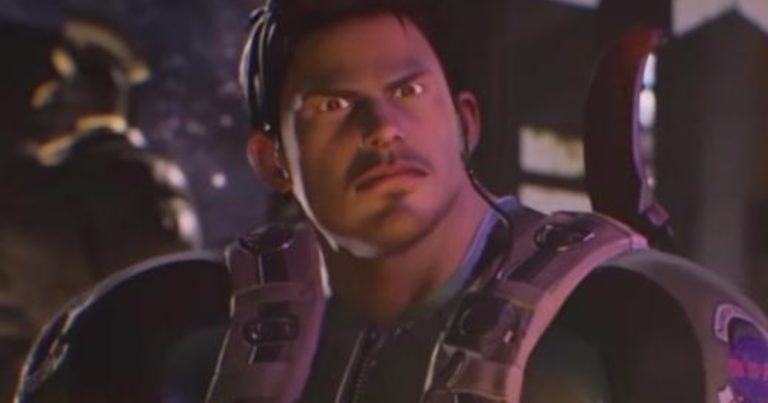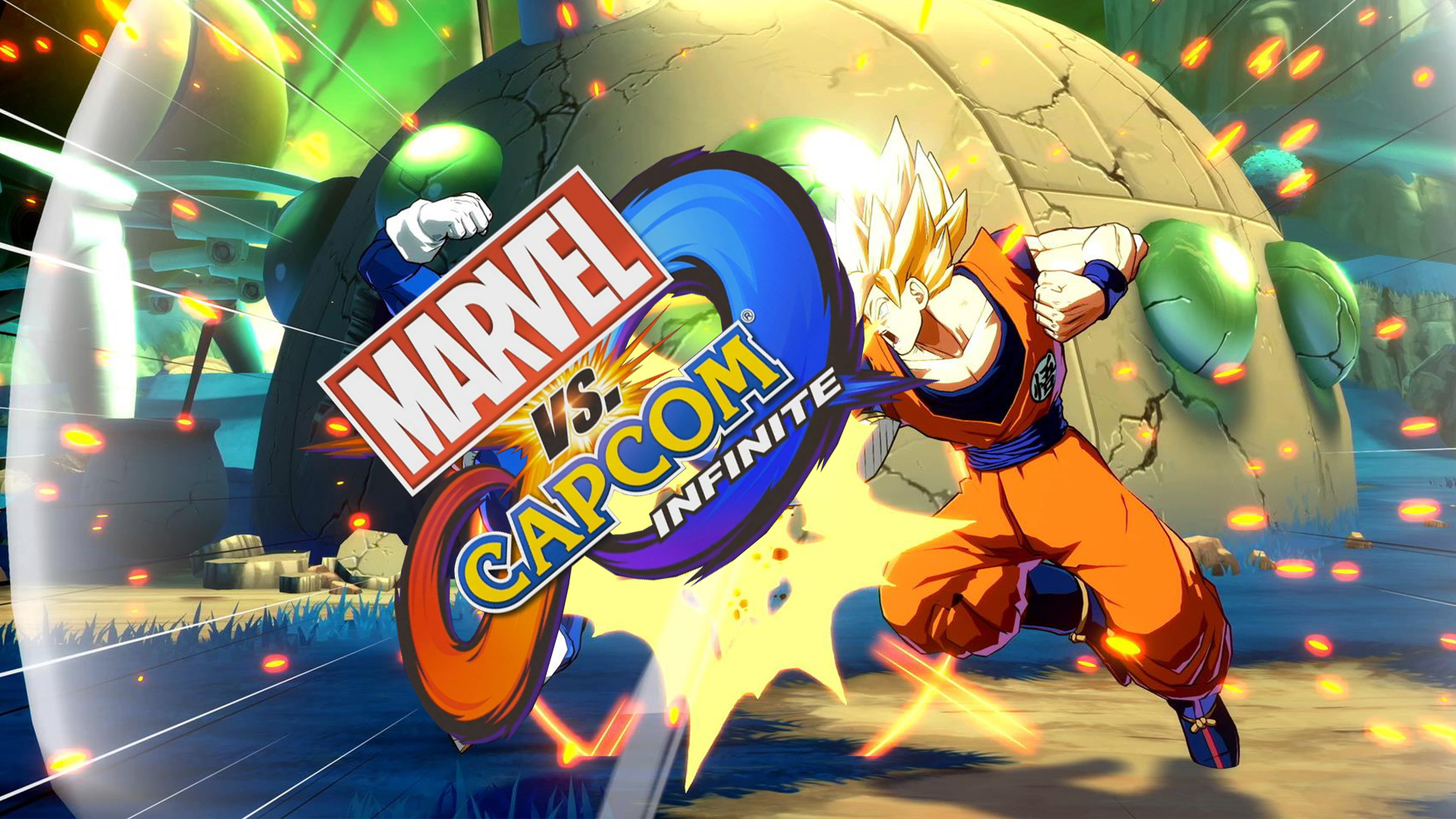It’s a great time to be alive if you’re into fighting games.
Given all of the options available in 2017 alone, you’d be forgiven for missing one or two, because as they say in the scene, “we eSports now.” In a year that seems already pretty packed with updates to popular franchises like Injustice, Tekken, and Guilty Gear, there was only one all-consuming title on the minds of the fighting game community leading up to the conference.
Because Capcom has a seemingly infinite (ha) stranglehold on the fighting genre, even people who don’t play games on a regular basis, find themselves looking forward to the next Marvel vs. Capcom title, which this time around, leans heavily on the indomitable Marvel Cinematic Universe.
In a crucial move that’ll no doubt please the competitive community, Marvel vs. Capcom: Infinite plays like a hybrid of Capcom’s older superhero fighters. It seamlessly picks up mechanics from older titles, while still managing to feel new. The return of the Marvel Super Heroes gem system adds new layers of strategy, while the conservative focus on combos is a clear carryover from X-Men vs. Street Fighter. It’s only been so many years since the underrated Tatsunoko vs. Capcom was released on the Wii, but it’ll be nice to play a Versus title that doesn’t encourage forcing a player to relinquish their controller in salt-afflicted resignation for 30 seconds at a time, while their opponent is done inflicting an unblockable string of moves.
It’s a genuine shame then, that with all of the praise I can heap on it otherwise, the game just looks so bad. I understand that this is a fighting game, and I’m firmly entrenched in the “gameplay over graphics” argument for any title where it applies, but the overwhelming response to the game’s visuals over social media make me feel confident in saying it repeatedly:
It looks bad. Not only on a technical level, where the textures on characters and environments are woefully under par in ways that evoke imagery reminiscent of PS2-era cutscenes, but in art direction overall. It was honestly a bit distracting to witness. The art direction is all over the place, with the character interpretations ranging from “concept art” to “CG rendering”, and in some cases don’t even look like they’re from the same game. Versus games typically adopt a comic book-like aesthetic, but unfortunately, Marvel vs. Capcom: Infinite, in its current form, looks more like a 90’s CG television show, especially when it comes to the cutscenes. Reboot came to mind several times as I watched the characters riff and banter with one another, and I’m pretty sure that wasn’t their intention when this demo was cobbled together.

As I played through the demo, I found myself at war with Capcom. I struggled to like the game, while being continually distracted by how outdated and lazy it looked overall. When users online compare it to mobile games like Contest of Champions or Future Fight, they aren’t entirely inaccurate. I’m holding out hope that we’re all just playing a very early demo, and it’ll all come together before September.
When you’re Capcom, you can afford to rest on your laurels a bit, because even when you completely botch your last game’s launch, you can still count on it getting top billing at all major tournaments. You can even put out an underwhelming demo where you have players beating down clone dummies for a half hour, and still have pros labbing it up online. But, what happens when your competition steals the ground from underneath your feet? While Capcom was busy proving they could be complacent even with the Marvel branding machine on their side, Arc System Works had been working on their own ace-in-the-hole franchise for E3, and came out swinging. The impact of their new project was so profound, that it not only blindsided everyone in attendance, but nearly, completely neutralized any hype people thought they would have for Capcom last week.
Enter Dragonball Fighter Z:
Coming from completely, utterly out of nowhere, and debuting during the Microsoft conference of all places, for two minutes the world seemed to stop, as years of 3D DragonBall Z fighting games were rendered moot.
Dragonball Fighter Z, as ArcSys has named it, (continuing their tradition of shoving a random letter into their titles for effect) is a work of art. I know I probably reek of fan-assisted hyperbole, it’s an undeniable sentiment you can feel from the very moment you witness any frame of it in action. Utilizing the same Unreal Engine-powered visuals of Guilty Gear Xrd to create a playable version of the anime, the game seamlessly integrates the iconic imagery of its source material in ways I can only describe as aesthetically, and mechanically perfect. It’s Bird Studio vs. Capcom, because they’re clearly going for the jugular by virtue of it being a 3v3 tag game as well.
Guilty Gear has always been a franchise that reveled in its anime-themed imagery, but with GGXrd on the Playstation 4, developer Arc System Works hit a clear turning point in their stylized approach. With a seemingly endless suite of available technology to take their game into graphical highs never seen before, they instead opted to preserve the franchise’s look. Instead of going fully 3D like their competition, they instead sought a look closer to the 24 frame-per-second unreality of Japanese animation, while still adhering to the split-second timing a fighting game needs at a full 60 frames per second.
The end result is a game that technically exists in three dimensions, but plays and looks like the best of classic games in the genre, complete with consistent, momentary visual tricks to remind you just what they’ve achieved in real-time. It looks stunning, and when applied to DragonBall Z, it single-handedly achieves what no other game in the franchise has before. Characters exhibit frames of animation that echo the original anime, such as Frieza’s impossibly vertical jump kick, or Majin Buu’s childish ground pound, and these are only two of many visual cues that will either look bad-ass to newcomers, or lovingly crafted for the fans that will recognize them.
Since DBZ characters don’t look out of place at all utilizing Guilty Gear’s aggressive, air combo heavy gameplay, it looks like it’ll be a blast to play, with depth to spare. For someone deterred over the earlier games not being terribly deep, any situation where the Kamehameha is the result of a joystick motion instead of holding a button is a win.
We’ll definitely be keeping an eye on both moving forward, but for me, there was a clear winner of the FGC this E3, and it almost made me forget about the game I was resigned to accepting despite its obvious flaws. Instead, I found myself excited for a game so much, that the wait felt painful by comparison.
you vs the game she told you not to worry about #E32017 #SonyE32017 #DBFighterZ #MVCI pic.twitter.com/taNohsk4Im
— Victra @ Edelgard 🖤🦅🥀🔥👑 (@VictraGG) June 13, 2017
Dragonball Fighter X is due Early 2018, Marvel vs. Capcom Infinite is due September 19th, 2017.


